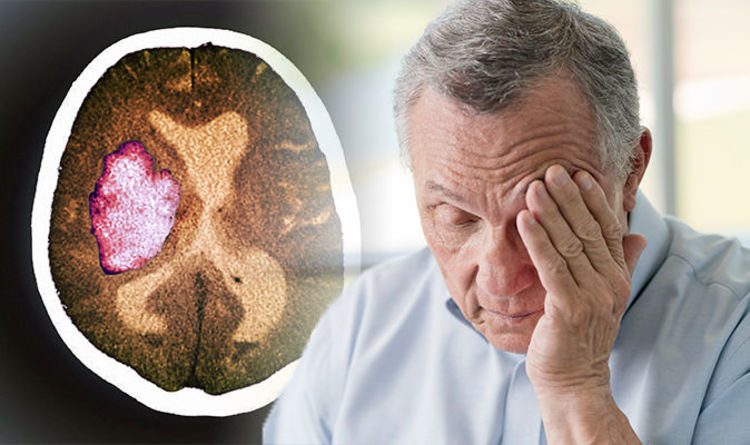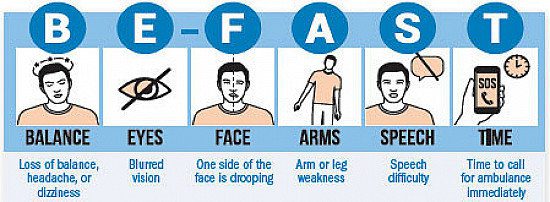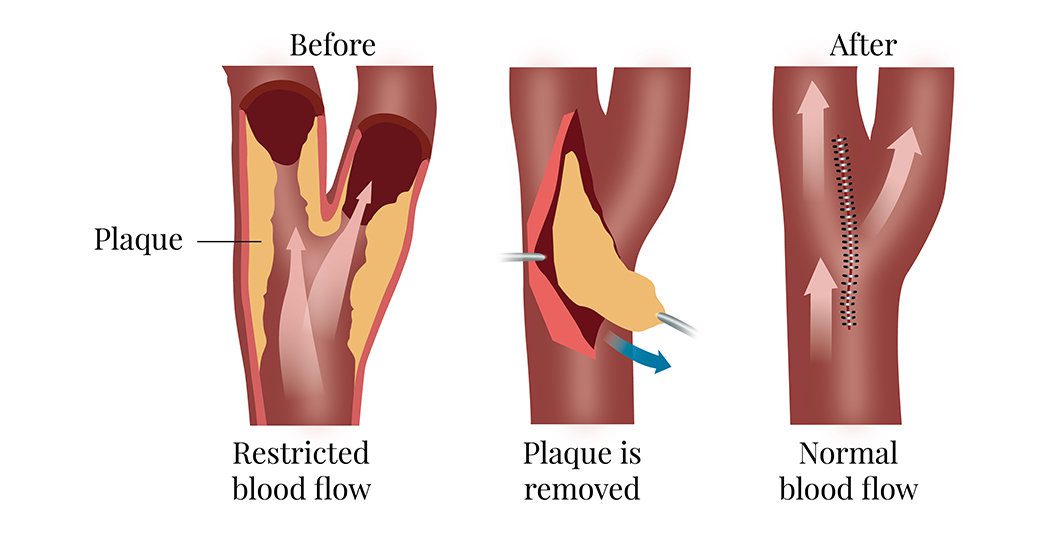According to Mayo Clinic, a mini-stroke occurs when blood flow to the brain is temporarily blocked, leading to symptoms similar to a stroke that typically last only a few minutes to a few hours.
The mini-stroke symptoms can vary, but they often include weakness or numbness in the face, arm, or leg, especially on one side of the body.
Other common symptoms may include slurred speech, sudden confusion, difficulty speaking or understanding speech, vision changes, dizziness, and loss of balance or coordination.
Please be aware that these symptoms can occur suddenly and without warning.

Dr. Gurneet Singh Sawhney, one of the best neurosurgeons in Mumbai, has extensive experience treating patients with strokes and mini-strokes.
He highlights the importance of knowing the risk factors that can increase the chances of having a mini-stroke.
These factors include high blood pressure, diabetes, high cholesterol, smoking, obesity, and a family history of stroke.
This article aims to educate readers about mini-strokes and their symptoms and the importance of seeking medical attention as soon as possible.
It also emphasizes the significance of taking measures to reduce the risk of having a mini-stroke.
How does a mini-stroke affect life expectancy?

While mini-strokes are mostly considered a warning sign for a potential stroke, they themselves do not typically result in long-term disability or impact life expectancy significantly.
However, having a mini-stroke can be an indicator of underlying health issues, such as hypertension or diabetes, which can increase the risk of having a more severe stroke in the future.
Therefore, addressing these underlying health issues and making lifestyle changes is vital to reduce the risk of future strokes.
The impact on life expectancy after TIA can vary depending on factors such as age, general health, and the severity of the mini-stroke.
Please remember that predicting life expectancy after mini-stroke is impossible as it varies significantly depending on individual circumstances.
However, studies have shown that the impact on life expectancy after TIA stroke is generally minimal. Most people can return to their usual activities and enjoy a good quality of life afterwards.
Nevertheless, early diagnosis and treatment, lifestyle changes, and managing underlying health conditions can help reduce the risk of future strokes and improve overall health and life expectancy.
What are the risk factors for mini-stroke?
Several risk factors can increase the likelihood of experiencing a mini-stroke, as well as the risk of having a more severe stroke in the future, including:
- High blood pressure
- Diabetes
- High cholesterol
- Smoking
- Obesity
- Family history
- Age
- Gender
Diabetes, high blood pressure, and high cholesterol can damage blood vessels and reduce blood flow to the brain, making it more likely for clots to form and cause a mini-stroke.
Ways in which you can prevent further strokes
Preventing further strokes is essential for those who have already experienced a mini-stroke or a more severe stroke. Making lifestyle adjustments, taking medications, and occasionally undertaking medical procedures all contribute to lowering the risk of stroke in the future.
The following methods can assist in lowering the likelihood of having another stroke:
Lifestyle changes
Reducing the risk of future strokes through lifestyle modifications is quite effective. Among these modifications are quitting smoking, keeping a healthy weight, eating a diet low in sodium, saturated fats, and trans fats, regular physical exercise, and addressing underlying medical disorders, including high blood pressure, diabetes, and high cholesterol.
Medications
Some medications, such as antiplatelet, anticoagulant, blood pressure, and cholesterol-lowering drugs, minimize the risk of future strokes.
Medical procedures

In some circumstances, people may require medical interventions to lower the risk of future strokes. These operations include carotid endarterectomy, which entails clearing the carotid arteries of plaque build-up to increase blood flow to the brain, and carotid artery stenting, which involves inserting a stent to keep the artery open.
Surgery
In rare circumstances, doctors may recommend surgery to stop future strokes, such as in people with a hole in their heart (patent foramen ovale) that they must seal to prevent blood clots from going through it.
Rehabilitation
After a stroke, rehabilitation can help a person regain their strength, balance, and coordination, as well as learn new skills that will assist them in handling their everyday activities.
Working closely with a specialist doctor is vital when creating a plan to lower the risk of future strokes because it will vary depending on personal risk factors and medical history.
You can consult Dr. Gurneet Singh Sawhney for customized mini-stroke treatment. He has 17-plus years of experience and is considered one of the best neurosurgeons in Mumbai.
He is available for consultation at Neurolife Brain & Spine Clinic, Fortis Hospital, Mulund, and Fortis Hiranandani Hospital, Vashi.
Supporting recovery and improving life expectancy

Recovering from a mini-stroke can be challenging, but proper support can result in positive outcomes.
Here are some pointers provided by Dr. Gurneet Sawhney to support recovery and improve life expectancy after a mini-stroke:
- Making lifestyle changes can minimize the risk of future strokes and improve your health.
- Take medications as your doctor prescribes to lower the risk of future strokes.
- Attend rehabilitation and therapy as they can help you recover.
- Taking care of underlying medical issues, including high blood pressure, diabetes, and high cholesterol, might reduce the chance of stroke in the future and enhance general health.
- It is necessary to go for regular check-ups so your doctor can monitor your health and adjust the treatment plan.
- Seeking support from family, friends, and medical professionals can help you manage recovery’s physical and emotional difficulties.
It is imperative to remember that a mini-stroke should never be taken lightly. Consult with a skilled neurosurgeon like Dr. Gurneet Sawhney immediately if you encounter any of the above-mentioned symptoms.
You should do this to lower your risk of having a more severe stroke and to maintain good physical and brain health.
FAQ
Can you live a long life after a mini-stroke?
Yes, it is often possible to live a long life after a mini-stroke. Recovery time and prognosis depend on the individual’s overall health and the severity of the stroke. Most people will recover fully with proper medical care and lifestyle changes.
Do mini-strokes lead to death?
No, mini-strokes usually do not lead to death. However, they can increase the risk of a major stroke in the future and cause severe and long-term disability if not treated quickly and adequately.
Can you fully recover from a mini-stroke?
Most people who experience a mini-stroke fully recover within 24 hours, although some may have lingering effects for a few days or longer. Taking steps to reduce risk factors for stroke, such as maintaining a healthy lifestyle and controlling any existing medical conditions, can help reduce the chance of having another mini-stroke or a more serious stroke.
Do mini-strokes always lead to major strokes?
Most mini-strokes do not lead to major strokes. According to the American Stroke Association, up to 80% of people who experience a mini-stroke will not have another major stroke. However, people who experience a mini-stroke are at an increased risk of having a major stroke. Therefore, take steps to lower the risk of having a major stroke by taking prescribed medications and making lifestyle changes.
